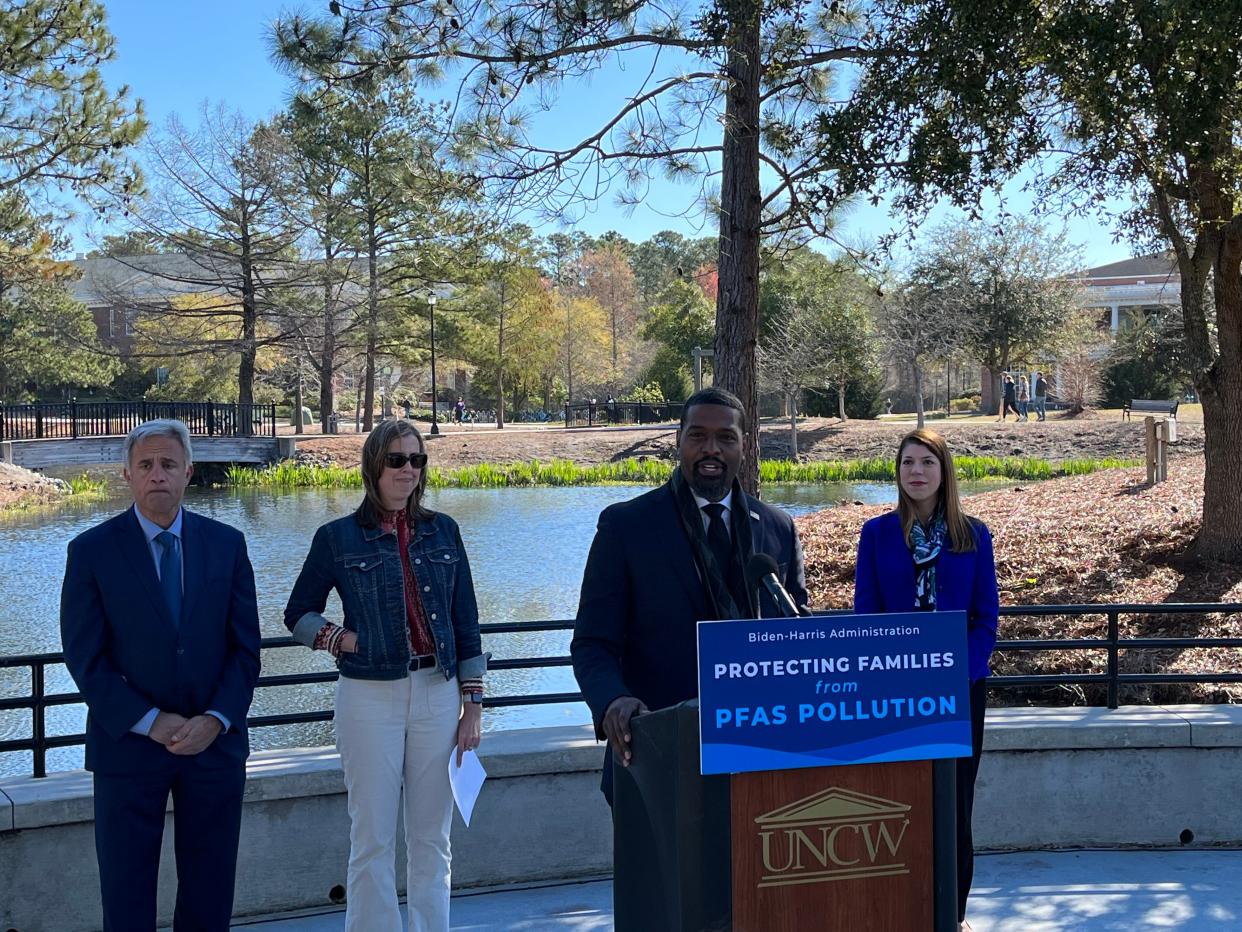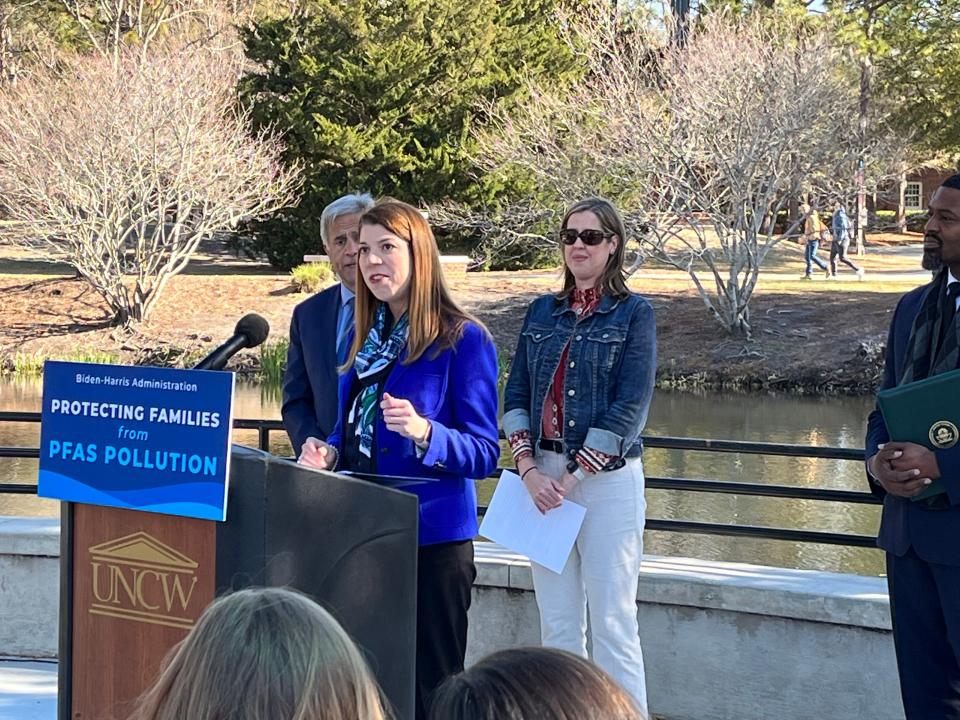EPA introduces new rules aimed at limiting future GenX, PFAS exposure

The U.S. Environmental Protection Agency has introduced a first-of-its-kind drinking water standard for PFAS and GenX, in a step state and federal officials say will seriously limit future exposure to these toxic chemicals.
On a blustery, cold day at the University of North Carolina Wilmington, EPA Administrator Michael Regan unveiled drinking water standards for six PFAS chemicals, including PFOA, PFOS and GenX. Under these new drinking water standards, public water systems will be required to monitor and reduce concentrations of these six PFAS compounds to limits set in the proposed rules.
“I'm so proud to announce that EPA is proposing the first-ever national standard to protect communities from PFAS in drinking water,” Regan said. “This is something that communities like Wilmington have been demanding for years, and today, we are finally answering those calls.”
More:A billion dollar disaster: New Hanover County faces daunting problem as GenX crisis spreads
PFAS, also known as per- and polyfluoroalkyl substances, are a group of compounds created by chemical companies such as Chemours and DuPont for use in non-stick items and other products. The chemicals were considered “miracles” when they were first introduced because of their abilities to resist water, heat and other forces, but those same characteristics made them dangerous to the environment and humans because of their inability to breakdown.
EPA’s proposed drinking water standards will set limits on PFOA and PFOS at four parts per trillion, according to a press release from EPA. It would also create a limit on a combination of four other PFAS including PFNA, PFHxS, PFBS and GenX.

Many of these PFAS chemicals have found their way into the homes of more than one million residents who rely on the Cape Fear River for their drinking water. For more than 30 years, Chemours, and DuPont before them, released these compounds into the Cape Fear region, contaminating the state’s largest river system and exposing 1-in-15 North Carolinians to substances linked to various types of cancer, liver damage and high cholesterol.
That environmental disaster is what drew local, state and federal officials to Wilmington Tuesday to announce these new rules.
“We came to Wilmington because this community, and all the communities in the eight-county region from here to Fayetteville, understand PFAS better than most,” said Elizabeth Biser, secretary of the North Carolina Department of Environmental Quality. “You understand that better because you've had to. You've been on the frontlines of PFAS contamination since 2017.”
More:What we've learned so far after a year of PFAS well testing around Wilmington
Regan’s announcement was met with mixed reaction. Environmental groups such as the Southern Environmental Law Center said EPA’s announcement is “an essential step forward” in making sure the “water flowing into our taps is not contaminated with PFOA, PFOS, GenX or other PFAS included in today’s announcement,” according to a statement from Geoff Gisler, program director at SELC.
Local environmental activists also supported the new drinking water standards, including Emily Donovan, who spoke at Tuesday's press conference.
"No one should ever wonder if the PFAS in their tap water will one day make them sick,” said Donovan, co-founder of Clean Cape Fear. “We all deserve access to health protective drinking water. It's a basic human right. Today, prayers were answered.”

The chemical industry, however, expressed serious concerns regarding EPA’s science in creating these drinking water standards.
“The EPA’s misguided approach to these MCLs is important, as these low limits will likely result in billions of dollars in compliance costs,” according to a statement from the American Chemistry Council. “The proposals have important implications for broader drinking water policy priorities and resources, so it’s critical that EPA gets the science right.”
More:Chemours claims to be 'good neighbor' in recent ad campaign, angers North Carolinians
In its statement, the American Chemistry Council said it looks forward to reviewing these new standards and commenting on them during an upcoming public comment period for these new regulations.
The regulations introduced today are simply proposals and will go through a public comment period, but Regan said he wants to get them finalized before the end of the year.
“Folks, this is a tremendous step forward in the right direction,” Regan said. “We anticipate that when fully implemented, this rule will prevent thousands of deaths and reduce tens of thousands of serious PFAS-related illnesses.”
STAY CONNECTED: Keep up with the area’s latest news by signing up for the Daily Briefing email newsletter.
This article originally appeared on Wilmington StarNews: EPA unveils new drinking water standards for PFAS, GenX in Wilmington

